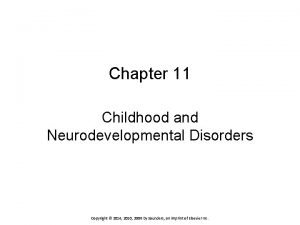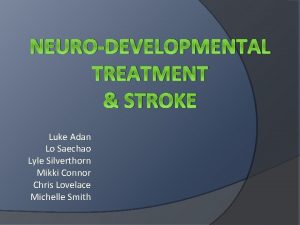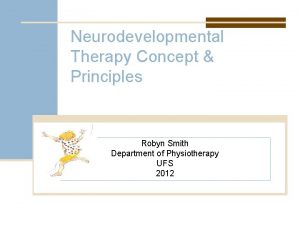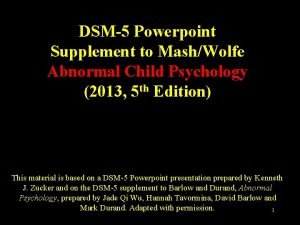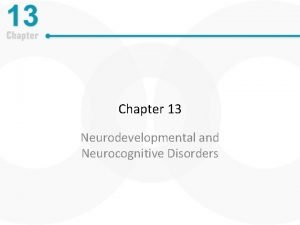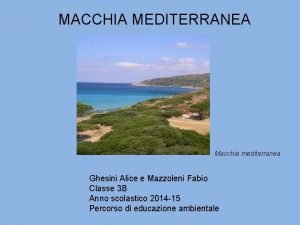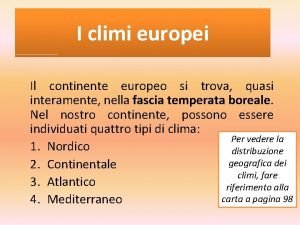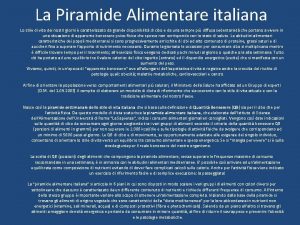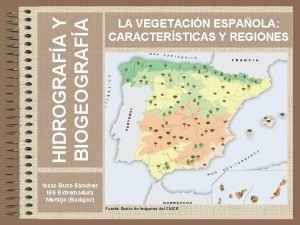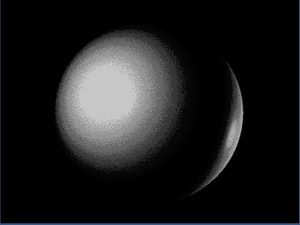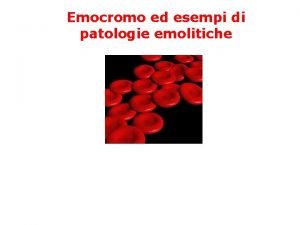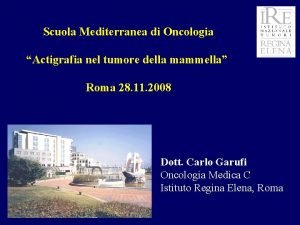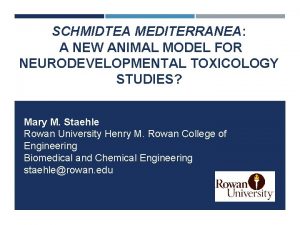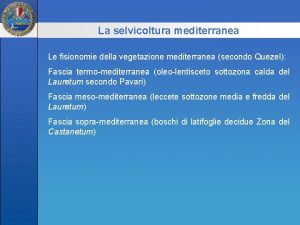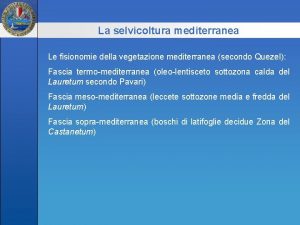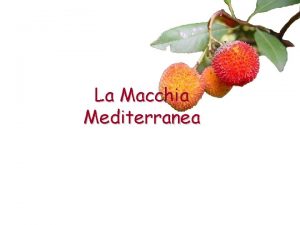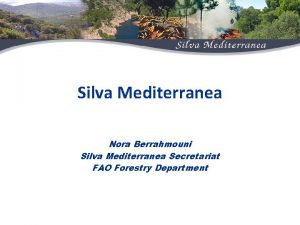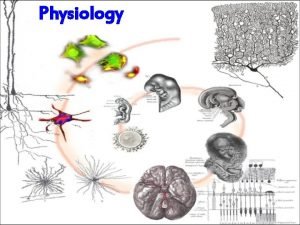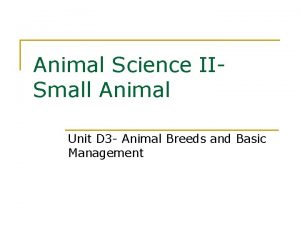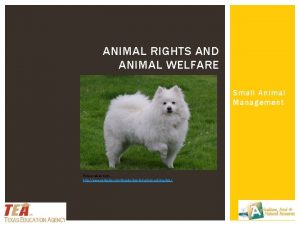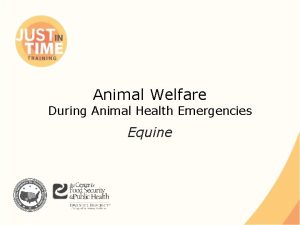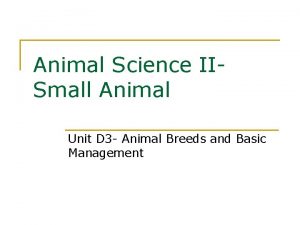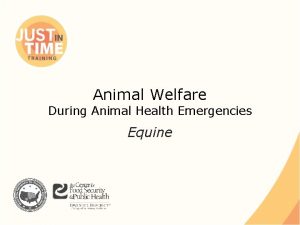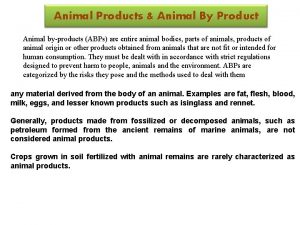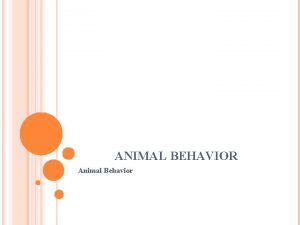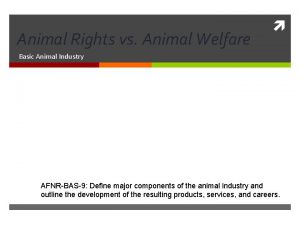SCHMIDTEA MEDITERRANEA A NEW ANIMAL MODEL FOR NEURODEVELOPMENTAL


















![80 60 100 LETHALITY TEST RESULTS 60 40 BPA BGF 20 10 Concentration [ppm] 80 60 100 LETHALITY TEST RESULTS 60 40 BPA BGF 20 10 Concentration [ppm]](https://slidetodoc.com/presentation_image_h/17a4f10641b3cf7491a2094758231e91/image-19.jpg)







- Slides: 26

SCHMIDTEA MEDITERRANEA: A NEW ANIMAL MODEL FOR NEURODEVELOPMENTAL TOXICOLOGY STUDIES? Mary M. Staehle Rowan University Henry M. Rowan College of Engineering Biomedical and Chemical Engineering staehle@rowan. edu

SCHMIDTEA MEDITERRANEA PLANARIA (SMED) Planaria are small, freshwater flatworms Schmidtea mediterranea were originally collected in 1998 from the Parc de Montjuïc in Barcelona (Sanchez Alvarado and Newmark) Smed are small (2 -6 mm), asexual worms

SCHMIDTEA MEDITERRANIA PLANARIA (SMED) Planaria are flatworms widely considered to be the simplest organism alive with a CNS 1 The CNS consists of a bi-lobed cephalic ganglia, which serves as the planarian brain, and two ventral nerve cords 2 Planarian body consists of a collection of pluripotent neoblasts 3 Umesono Y, Watanabe K, Agata K. “A planarian orthopedia homolog is specifically expressed in the branch region of both the mature and regenerating brain. ” Development, Growth, and Differentiation 39: 723 -727. (1997) 2 Cebria F, et al. “Dissecting planarian central nervous system regeneration by the expression of neuralspecific genes. ” Development, Growth, and Differentiation 44: 135 -146. (2002) 3 Newmark PA, Alvarado AS. “Not your father’s planarian: A classic model enters the era of functional genomics. ” Nature 3: 210 -219. (2002) 1

PLANARIA: MASTERS OF REGENERATION • Planaria are commonly studied for their ability to regenerate (from as little as 1/279 th) • The genome is sequenced • Previous behavioral teratology experiments have shown adverse effects and withdrawal-like symptoms • Cocaine 1, 2 • Marijuana substitutes 3 • Opioid-dopamines 4 1 Palladini et al. “A pharmacological study of cocaine activity in planaria. ” Comparative Biochemistry and Physiology 115 C: 41 -45. (1996) 2 Raffa RB, Valdez JM. “Cocaine withdrawal in Planaria. ” European Journal of Pharmacology 430: 143 -145. (2001) 3 Rawls SM, Gomez T, Raffa RB. “An NMDA antagonist (LY 235959) attenuates abstinence-induced withdrawal of planarians following acute exposure to a cannabinoid agonist (WIN 52212 -2). ” Pharmacology Biochemistry and Behavior 86: 499504. (2008) 4

WE HYPOTHESIZE THAT HEADREGENERATING PLANARIA ARE A VIABLE MODEL FOR INVESTIGATING THE DIRECT EFFECTS OF TOXIN EXPOSURE DURING NEURODEVELOPMENT. 5

Assessment Methods: p. LMV Planarian Locomotive Velocity (p. LMV) Rawls SM, Gomez T, Raffa RB. “An NMDA antagonist (LY 235959) attenuates abstinence-induced withdrawal of planarians following acute exposure to a cannabinoid agonist (WIN 52212 -2). ” Pharmacology Biochemistry and Behavior 86: 499 -504. (2008) Lowe, J. R. et al. Neurotoxicology and Teratology, 48 (2015) 28 -32.

Assessment Methods: p. LMV and Ethanol in Planaria Lowe, J. R. et al. Neurotoxicology and Teratology, 48 (2015) 28 -32.

Inoue T, et al syst Lowe, J. R. et al. Neurotoxicology and Teratol Planarian Light Avoidance (p. LA)

Assessment Methods: p. LA and Ethanol in Planaria Lowe, J. R. et al. Neurotoxicology and Teratology, 48 (2015) 28 -32.

Cognitive Function Score Assessment Methods: Cognitive Function Score Lowe, J. R. et al. Neurotoxicology and Teratology, 48 (2015) 28 -32.

Assessing Effects of Toxin Exposure • High doses of ethanol (2%) inhibit cognitive function in planaria* • Lower doses of ethanol (1%) do not alter cognitive function in planaria – Acute exposure does slightly attenuate cognitive function – perhaps a response to de-ciliation 1, 2 Lowe, J. R. et al. Neurotoxicology and Teratology, 48 (2015) 28 -32.

Does Alcohol Affect Planarian Regeneration? Lowe, J. R. et al. Neurotoxicology and Teratology, 48 (2015) 28 -32.

Does Alcohol Affect Planarian Regeneration? Lowe, J. R. et al. Neurotoxicology and Teratology, 48 (2015) 28 -32.

Does Alcohol Affect Planarian Regeneration? Lowe, J. R. et al. Neurotoxicology and Teratology, 48 (2015) 28 -32.

Does Alcohol Affect Planarian Regeneration? Lowe, J. R. et al. Neurotoxicology and Teratology, 48 (2015) 28 -32.

Neurodevelopmental Effects of Ethanol Exposure • Alcohol affects intact planaria in a dosedependent manner • Exposure to 1% ethanol delays the reacquisition of cognitive function in head regenerating planaria, suggesting that alcohol retards neurodevelopmental processes in planaria Lowe, J. R. et al. Neurotoxicology and Teratology, 48 (2015) 28 -32.

BISPHENOL A (BPA) Commonly used in plastics and epoxy resins Estrogenic molecule • Endocrine disruptor Present in 93% of human population Placental transfer of BPA CAN WE DO BETTER? http: //upload. wikimedia. org/wikipedia/commons/thumb/6/61/Bisphenol-ASkeletal. svg/240 px-Bisphenol-A-Skeletal. svg. png

BIS-GUAIACOL F (BGF) BPA alternative Green engineering • Made from waste from paper/pulp industry Tests for human safety are still needed Kaleigh H. Reno, Joseph F. Stanzione, III, Joshua M. Sadler, John J. La Scala, and Richard P. Wool, “Bisphenol Alternatives Derived from Renewable Substituted Phenolics. ” U. S. Provisional Pat. Appl. , filed May 27, 2014.
![80 60 100 LETHALITY TEST RESULTS 60 40 BPA BGF 20 10 Concentration ppm 80 60 100 LETHALITY TEST RESULTS 60 40 BPA BGF 20 10 Concentration [ppm]](https://slidetodoc.com/presentation_image_h/17a4f10641b3cf7491a2094758231e91/image-19.jpg)
80 60 100 LETHALITY TEST RESULTS 60 40 BPA BGF 20 10 Concentration [ppm] 80 0 20 0 100 80 80 60 Control BGF 8 ppm BPA 8 ppm 20 0 0 1 2 3 4 5 6 7 Days of Exposure 8 9 10 % Lethality 100 40 Control BGF 6 ppm BPA 6 ppm 40 20 0 0 % Lethality Fatality Rate at 24 hours [%] 100 1 2 3 4 5 6 7 Days of Exposure 8 9 10 60 Control BGF 10 ppm BPA 10 ppm 40 20 0 0 1 2 3 4 5 6 7 Days of Exposure

BGF WAS LESS LETHAL TO THE SMED ON A DOSE-DEPENDENT SCALE 14 LD 50 [ppm] 12 BPA BGF 10 8 6 4 2 0 1 2 3 4 5 6 7 Time After Exposure [days] 8 9

BPA REPRESSES COGNITIVE FUNCTION 2. 5 BPA-I 2 ppm Control-I 2 ICFS 1. 5 1 0. 5 0 3 5 7 Time (Days) Intact Smed 9 1. 8 1. 6 1. 4 1. 2 1 0. 8 0. 6 0. 4 0. 2 0 BPA 2 ppm Control 3 5 7 Time (Days) Regenerating Smed 9

1. 5 Control BPA 2 PPM BGF 5 PPM ICFS 1 0. 5 0 3 4 5 6 Time (Day) 7 8 9

CONCLUSIONS BGF worms withstand higher concentrations for longer periods of time than BPA worms Planaria are a novel animal model for studying the direct effects of toxins on: • Neurodevelopment • In vivo Stem Cell (Neoblast) Differentiation • Potential for high-throughput experiments “Coal mine canary”? http: //blogs. discovermagazine. com/notrocketscience/2011/05/12/an-entire-flatworm-regenerated-from-a-single-adultcell/#. VJCsoyv. F_To

ACKNOWLEDGEMENTS Dr. Joseph Stanzione III Dr. Kevin Dahm Jesse R. Lowe Tyler D. Mahool Undergraduate Students

SCHMIDTEA MEDITERRANEA: A NEW ANIMAL MODEL FOR NEURODEVELOPMENTAL TOXICOLOGY STUDIES? Mary M. Staehle Rowan University Henry M. Rowan College of Engineering Biomedical and Chemical Engineering staehle@rowan. edu

ALCOHOL EXPOSURE AFFECTS PLANARIAN VIABILITY IN A DOSE-DEPENDENT MANNER Lowe, J. R. et al. Neurotoxicology and Teratology, 48 (2015) 28 -32.
 Chapter 11 childhood and neurodevelopmental disorders
Chapter 11 childhood and neurodevelopmental disorders Reflex inhibiting patterns
Reflex inhibiting patterns Robyn smith therapist
Robyn smith therapist Childhood disorders dsm-5 ppt
Childhood disorders dsm-5 ppt Neurocognitive disorders
Neurocognitive disorders Neurodevelopmental disorders
Neurodevelopmental disorders Mikromandibula
Mikromandibula La contaminazione degli alimenti mappa concettuale
La contaminazione degli alimenti mappa concettuale Macchia mediterranea bioma
Macchia mediterranea bioma Clima sinico
Clima sinico I climi europei
I climi europei Clima atlantico
Clima atlantico Piramide alimentare italiana
Piramide alimentare italiana Paisaje canario wikipedia
Paisaje canario wikipedia Mediterranea ambiente
Mediterranea ambiente Piramide alimenticia mediterranea
Piramide alimenticia mediterranea Anemia mediterranea portatore sano
Anemia mediterranea portatore sano Dieta mediterranea circadiana
Dieta mediterranea circadiana Fspos vägledning för kontinuitetshantering
Fspos vägledning för kontinuitetshantering Novell typiska drag
Novell typiska drag Tack för att ni lyssnade bild
Tack för att ni lyssnade bild Returpilarna
Returpilarna Shingelfrisyren
Shingelfrisyren En lathund för arbete med kontinuitetshantering
En lathund för arbete med kontinuitetshantering Underlag för särskild löneskatt på pensionskostnader
Underlag för särskild löneskatt på pensionskostnader Personlig tidbok för yrkesförare
Personlig tidbok för yrkesförare Sura för anatom
Sura för anatom
